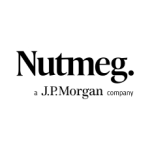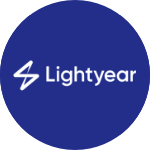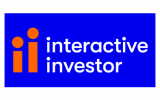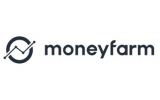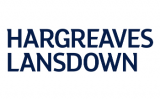Investment Ready Made Portfolios – How To Choose One
A ‘ready-made investment portfolio’ is one where you allow the investment experts to choose the asset mix of the portfolio on your behalf.
Looking for a ready-made portfolio to fit your investment goals?
It could be described as an ‘off the shelf’ investment offering and can be an attractive option if the idea of deciding exactly where to invest your money is something you simply don’t have time for or you are new to investing.
The good news is that over the last few years, investment platform providers have upped their game in providing carefully constructed model portfolio options to suit all kinds of investors.
Using low-cost funds such as ETFs and index trackers, and smart technology, there are some excellent options for investors.
Providers of ready-made portfolios:
Choosing a portfolio
With each portfolio, it is the investment team at your selected portfolio provider who has chosen the asset allocation.
Each portfolio will then invest in a number of investment funds and other vehicles – the portfolio provider’s documentation will clearly explain exactly where your money will be invested.
Depending on the type of portfolio service offered:
- The fund managers will then manage the investments on your behalf or
- Having made the investment choices for you, it is up to you on how you “manage” the investments going forward
The investment experts at the portfolio provider may also monitor the make-up of the portfolio and may consider changing it if market conditions alter, which might help mitigate the effects of falling stock markets. For example, they might decide to have more exposure to one investment fund, which they think is set to perform well and reduce their exposure to another fund.
However, you still need to make the initial decision as to which portfolio to choose.
When deciding which portfolio to invest in, you might decide to look at past performance records. If you do, then please remember that past performance is not necessarily a guide to future performance.
1. Interactive Investor
Important information: The value of investments can go down as well as up so you may get back less than you invested. This information is not a personal recommendation for any particular investment. If you are unsure about the suitability of an investment you should speak to an authorised financial adviser. Tax treatment depends on individual circumstances and all tax rules may change in the future.
2. AJ Bell
There are no tables for this criteria
3. Moneyfarm
Important information: The value of investments can go down as well as up so you may get back less than you invested. This information is not a personal recommendation for any particular investment. If you are unsure about the suitability of an investment you should speak to an authorised financial adviser. Tax treatment depends on individual circumstances and all tax rules may change in the future.
4. Hargreaves Lansdown
Important information: The value of investments can go down as well as up so you may get back less than you invested. This information is not a personal recommendation for any particular investment. If you are unsure about the suitability of an investment you should speak to an authorised financial adviser. Tax treatment depends on individual circumstances and all tax rules may change in the future.
Attitude to risk and capacity for loss
Your attitude to risk is the level of risk you are prepared to take with your money over a specified timeframe, for example:
If the value of your investment fell by 15%, would you immediately seek to sell the investment, or would you accept these losses given the possibility of gains in the longer term?
If you aren’t comfortable with the prospect of short-term losses, then you may be better suited to a lower-risk investment. Any stock market-based investment should be a medium to long-term investment in any case.
Your capacity for loss is the amount of money you can afford to lose without it having a detrimental impact on your financial situation.
For example, if a 15% fall in the value of your investment would have a material impact on your standard of living, once again, you may be better suited to a lower-risk investment where a drop in value of 15% is not likely to occur.
Of the portfolios featured the following allow you to choose the portfolio based on risk profile.
“If you are not sure what to do it can be beneficial to seek financial advice as you need to make sure that your portfolio is in line with both your attitude to risk and your capacity for loss. Skilled and experienced financial advisers know the right questions to ask to accurately assess your risk level and loss capacity, as investments managed on your behalf can fall in value and rise, and you don’t want any nasty surprises.”
Different types of portfolios
Most platform providers offer a small number of different ready-made portfolios to suit different risk profiles.
We have highlighted below a breakdown of the types of portfolios ii offers.
Interactive Investor:
Interactive Investor offers two growth and two income portfolios.
The low-cost growth and income portfolios are not actively managed by fund managers and instead track the performance of stock market indices – these are known as passive investments. Their active growth and income portfolios offer active management from fund managers, which is reflected in the higher ongoing portfolio costs.
Active Growth – This portfolio consists of 10 actively managed funds (OEICs) and investment trusts, including holdings in Scottish Mortgage Ord & JP Morgan Emerging Markets Ord. The ongoing charge of the portfolio is 0.81%. More info »
Low Cost Growth – For investors looking to build wealth using low-cost tracker funds. The portfolio consists of 9 low-cost tracker funds and ETFs. Holdings include Vanguard FTSE 250 UCITS ETF and the L&G Global 100 Index Acc fund. The ongoing charge of the portfolio is 0.18%. More info »
Active Income – A portfolio of 10 high yielding actively managed funds. At the time of writing, the portfolio had a historic income yield of 4.22%. Holdings include Murray International and Fidelity Global Dividend. The ongoing charge of the portfolio is 0.81%.
Low Cost Income – For investors looking for a good income yield using ETFs and low-cost tracker funds. Holdings include SPDR S&P Global Dividend Aristocrats ETF and Wisdom Tree Emerging Markets Equity Income ETF (GBP). The ongoing charge of the portfolio is 0.32%. More info »
Active versus passive portfolios
When comparing different ready-made portfolios, make sure you look at the ongoing charge associated with each.
The higher the charge, the more the returns on your investment will be eroded. However, it may not be a case of automatically choosing the lowest cost option, as you need to think about what level of service you will get in return.
If you choose an active portfolio, as opposed to a passive portfolio, then your ongoing charges are likely to be higher. However, you will also benefit from ‘active management’ of your portfolio, where the fund managers will be actively seeking to maximise the returns from their fund, for example they might be proactively altering the fund’s exposure to various individual company shares on a continuous basis.
With passive portfolios, the underlying investment funds will track the performance of stock market indices, which does not require ongoing management.
Portfolio investing can be slightly more expensive than other investment options in any case, as you need to pay charges both for the underlying investments and for your portfolio provider’s expertise.
Passive portfolio providers
Providers that offer low cost portfolios that focus on ETFs (Exchange Traded Funds) and index tracker funds include:
- Interactive Investor – offer 2 low cost portfolios investing in tracker funds for income & growth
- Moneyfarm – offer an actively managed portfolio service using ETF funds
- Legal & General – offer a range of ready made multi-index funds where at least 50% of the portfolio is made up of low cost tracker funds.
Investing ethically in a ready-made portfolio
Some providers offer ready-made portfolios for investors that have a focus on ethical investing.
With increasing focus on sustainable investment platform providers in recent years have been working hard to provide their clients with investment choices that align with their values and priorities.
Interactive Investor has an Ethical Growth Portfolio that has been put together using their ACE 40 Methodology focussed on high-quality choices available across the universe of ethical investments that is worth a closer look.
Tax-free investment
Many people choose to invest in a ready-made investment portfolio when making use of their annual Stocks & Shares ISA allowance.
You can invest up to £20,000 in the 2023-24 tax year in an ISA.
All of the portfolio providers listed in this article allow you to invest in their portfolios via their ISA account.
You can also access these portfolios via a self invested personal pension plan (SIPP).
Important Risk Information:
This website contains information only and does not constitute advice or a personal recommendation in any way whatsoever. The value of investments and income from them can fall as well as rise and you may not get back the full amount invested. The tax efficiency of ISAs is based on current tax law and there is no guarantee that tax rules will stay the same in the future.
Different types of investment carry different levels of risk and may not be suitable for all investors. Prior to making any decision to invest, you should ensure that you are familiar with the risks associated with a particular investment and should read the product literature. If you are in any doubt as to the suitability of a particular investment, both in respect of its objectives and its risk profile, you should seek independent financial advice.
Tags



